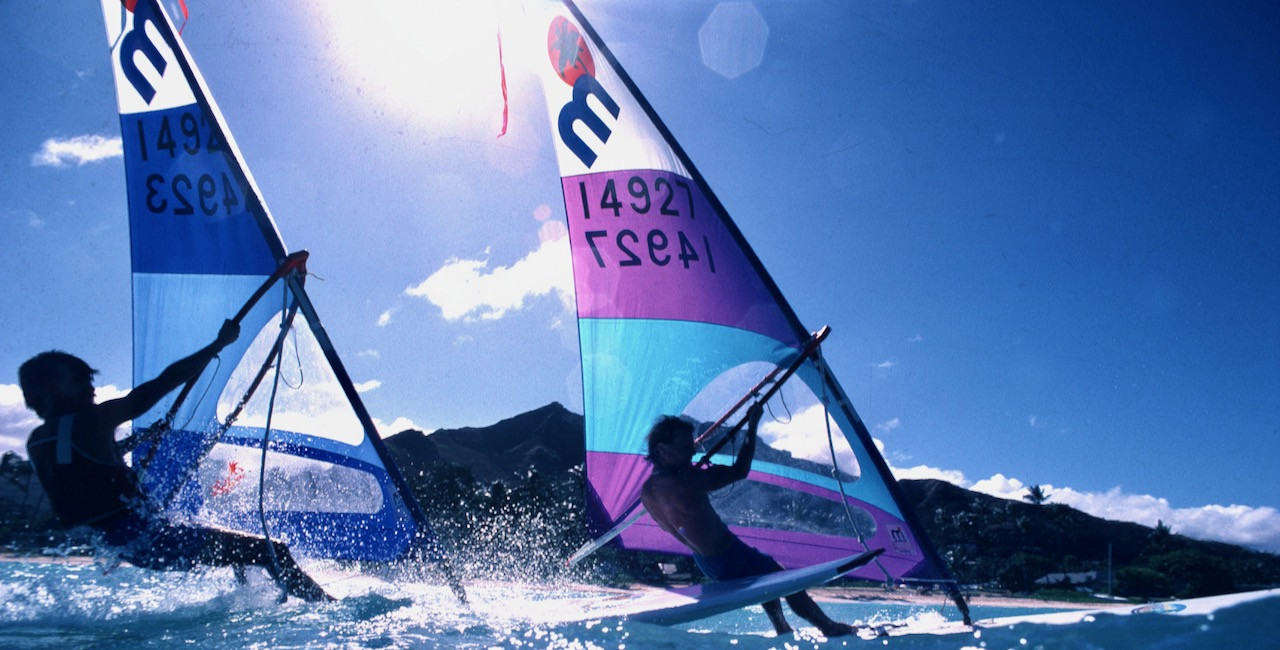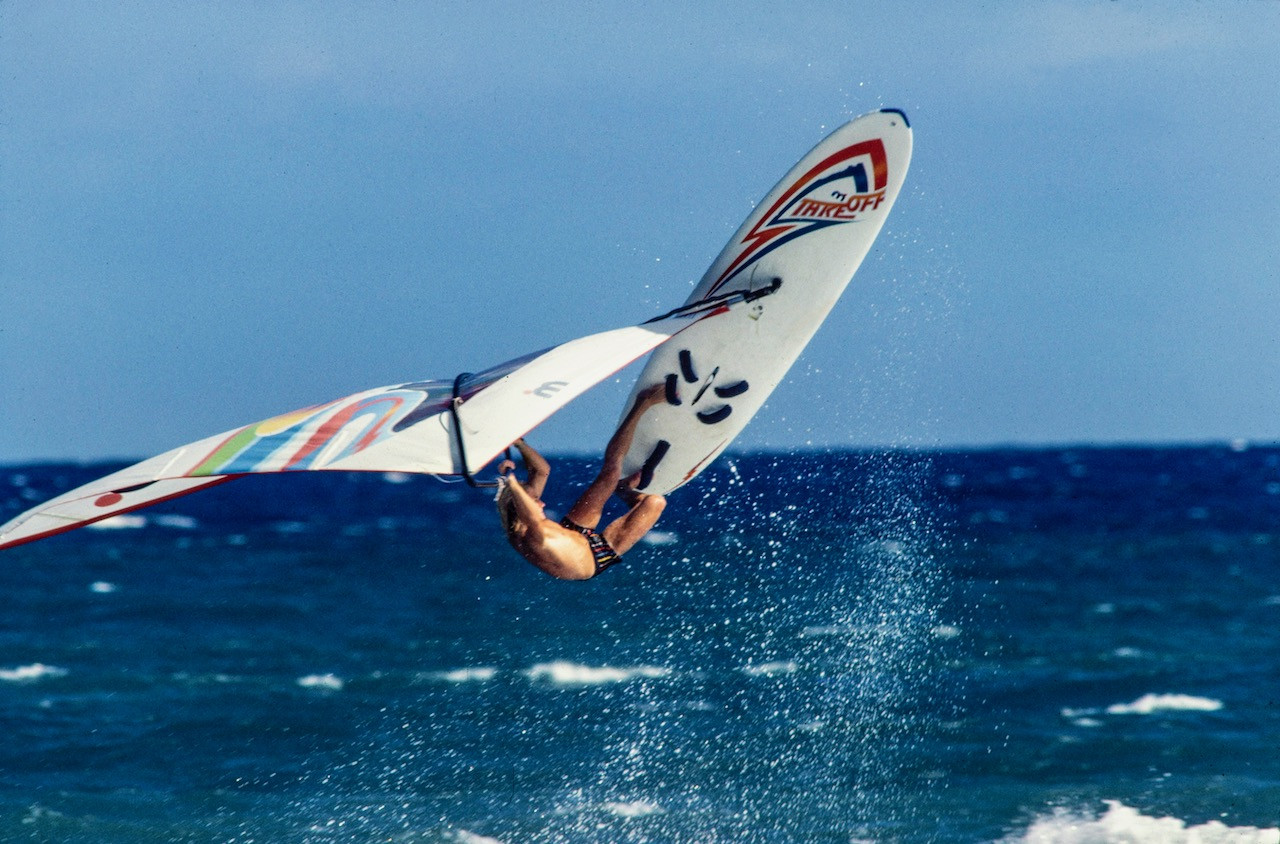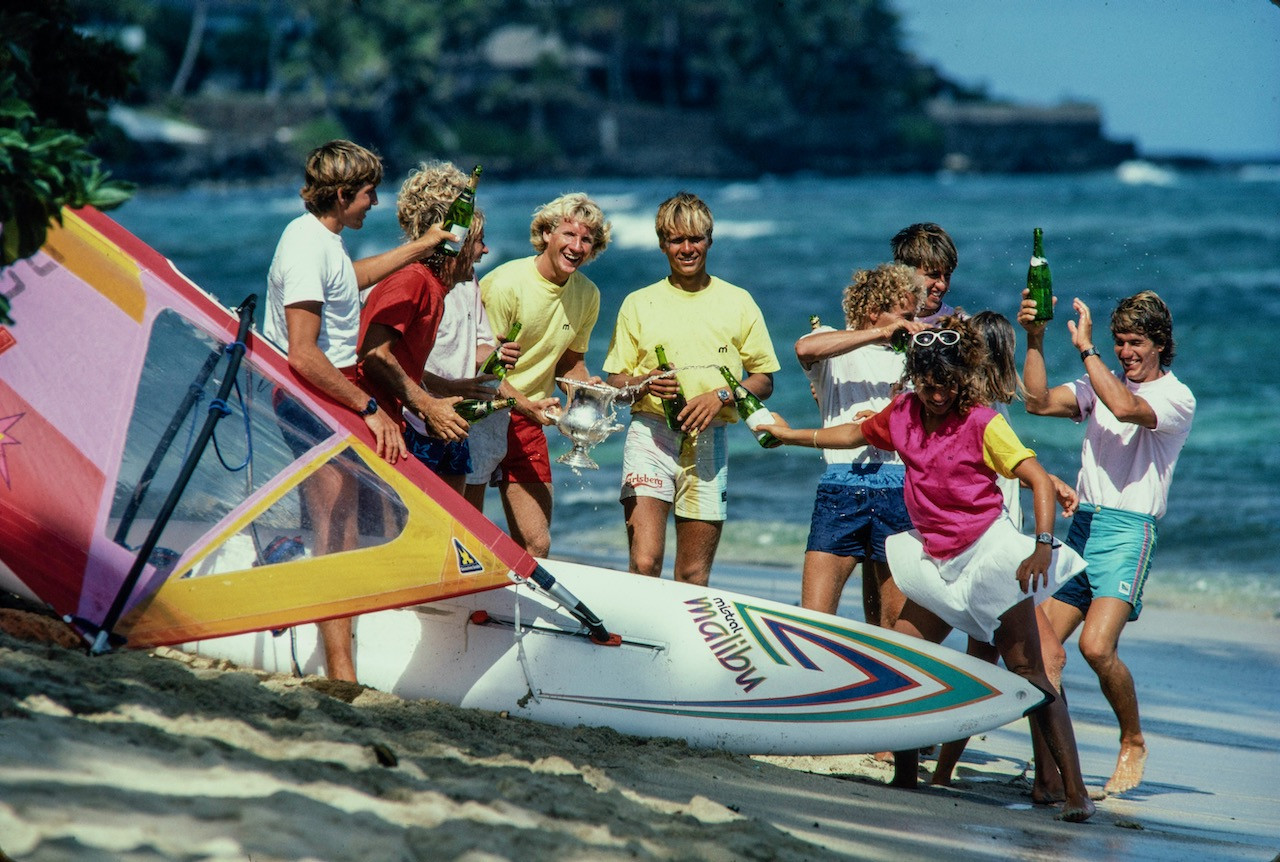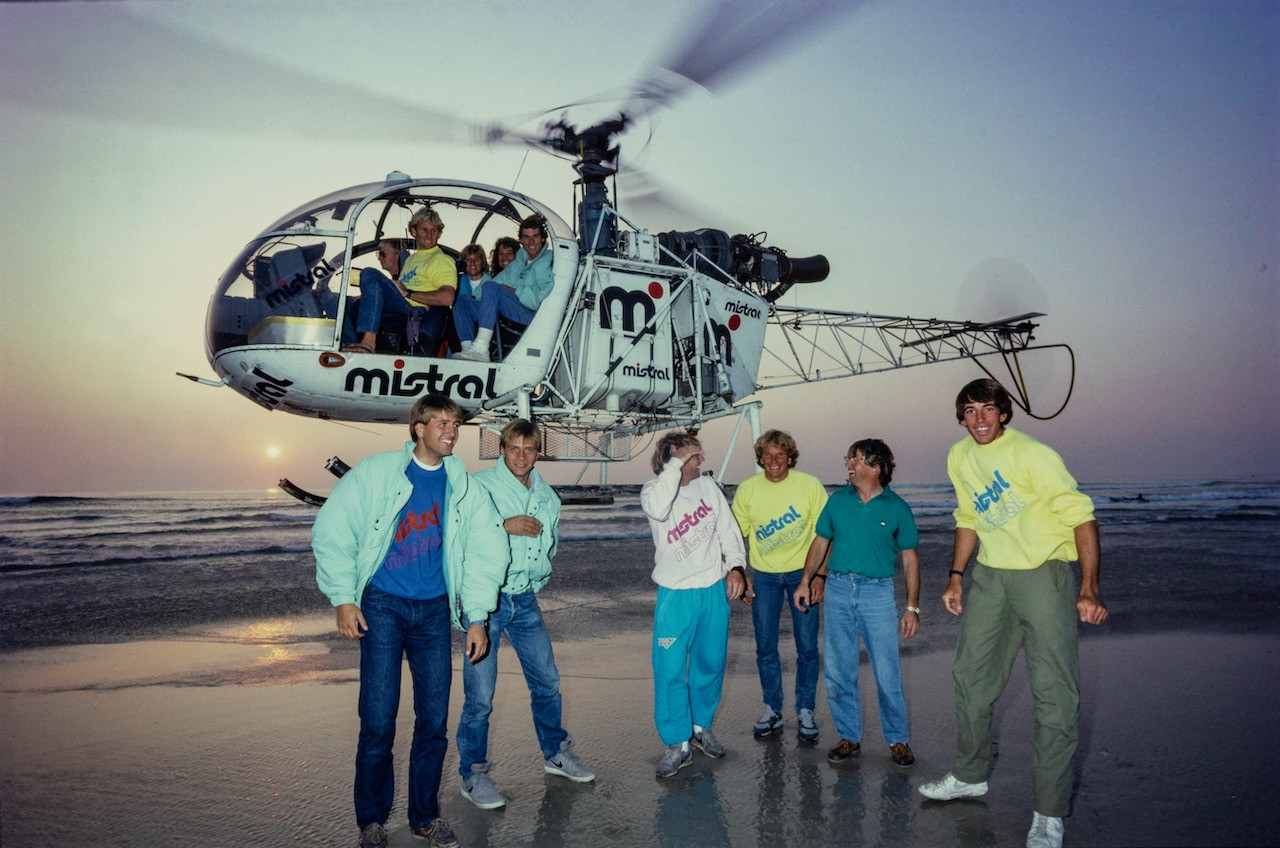1980-1984 Make or Break Years

With Peter Brockhaus's departure in 1979 and Rick Naish's signing as a lead shaper and designer in 1977, the irony was that Mistral management was commercially against the future of shorter, foot-strapped boards. It put all its energy into the Prade/Fichtner Mistral Competition longboard. By 1981, Mistral had no proper funboard available. Despite phenomenal sales of the Mistral Competition, Europeans had fully embraced the shorter board, fuelled by Hawaiian pioneers and likes of the newly created F2 Brockhaus brand, which would become the world's best-selling funboard brand for a short time. Ultimately, Mistral's survival came from a new investor(Adia) in 1981 and a change of internal mindset via that blunt instrument of 'consumer demand'.
A Rapidly Evolving Sport and the Shift to Funboards
Whilst the Mistral Competition had sold more than 200.000 units, sales were slowing by 1981. Rick Naish's 'Naish' board (top image), produced by Mistral, was released in 1979 to target Robby Naish fans alongside the Kailua board. No Mistral logo was added to the board due to fear of poor construction issues, which would damage the brand. The sails, however, were Mistral branded and created by Pat Love. Hawaiian artist Russel Davidson had been commissioned by Brockhaus for the tropical-flavoured graphics, which were a huge hit. As good as these boards were, rounded pintail and swallowtail boards were now in. The sport was evolving so fast that boards would become obsolete before production. No more so was this true with the release of the Rick Naish-designed Take Off, Mistral's first fully branded funboard, which was completely out of date when it was released, though it attracted a lot of attention due to a considerable marketing budget.

The Dream Team
Teddy Keifer joined Mistral in 1981 to manage a growing number of talented Mistral Team Riders. When he arrived, nothing was organised; he had no job description, and all Mistral knew they had a growing stable of riders who needed structure. Charly Messmer was the brand's first team rider, joined by Robby Naish in 1977. In 1983, the team consisted of Jill Boyer, Nevin Sayre, Randy Naish, Charly Messmer, Robby Naish, Frank Maass, Tomas Persson, Tim Aagesen, Pete Cabrinha and Nancy Johnson, followed by Natalie Lelièvre, Tim Aagesen, Anders Bringdal and finally Jürgen Hönscheid. Collectively, they dominated the World Cup Circuit disciplines. Ultimately, the Team became a think tank, a dream machine of creative, athletic talent lending their input into designs and testing, resulting in outstanding equipment that would result in Mistral becoming a superstar brand of prestige and fame. A potent, lasting effect was gained in dominating most events, and the powerful marketing imagery through Ulli Seer created priceless publicity that lasts to this day. While Team Riders came and went, the likes of Robby Naish remained with the brand until 2000.

With huge investment in team riders, a growing list of World Titles, and new board designs, many of which came from the hands of Rick Naish, production board variants of ever-improving quality were offered, eagerly grabbed by legions of Mistral fans. The power of association and the impetus of aspirational sailors elevated Mistral to stratospheric heights of brand prestige. Dutch sailmaker Gaastra would provide the brand's sails, which would go on to be created in a stunning array of colours. Mistral would enjoy many years as a leading light and driver of the sport's popularity from this platform.
Mistral's Dream Team - A Powerful Marketing Tool
